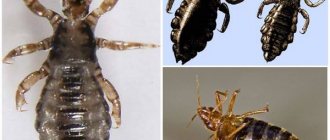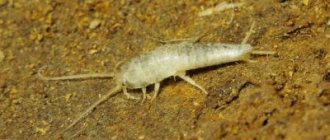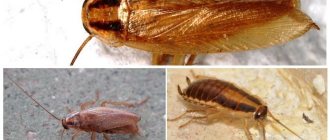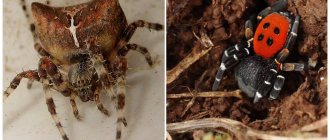Rats are the largest representatives of rodents in the world. On average, their body length is about twenty centimeters. But there are such giant specimens, the size of which can reach the size of a small dog.
In fact, an animal of such enormous size could easily pass for the monster so beloved by horror film makers.
Some species of these mammals are found everywhere, others are on the verge of extinction, and some species of rodents were recently discovered by zoologists.
Large specimens of animals can often be found among pets. They quickly become people's favorites and get used to them themselves. However, their cadaverous smell becomes a real problem and is not so easy to get rid of. But wild giant rats are very dangerous for humans.
We bring to your attention a rating, as well as photographs of the 10 largest rats known to mankind.
Gray rat
Pasyuki are distributed everywhere on all continents of the world, except for northern latitudes and Antarctica. It is the largest representative of the mouse family living in the Russian Federation. Its dimensions are up to 25 cm.
It is the scary gray rat that is a constant character in horror films. Mutant bastards swarming in the subway, sewers full of aggressive rodents – these are directors’ favorite subjects that have tickled the nerves of viewers for many years.
There are also a large number of myths and legends associated with pasyuk. On the Internet you can find stories about specimens weighing 18 kg, allegedly encountered during expeditions to Chernobyl. The gigantic size is explained by the effect of radiation.
Or the “true” stories of Moscow metro drivers who encounter hungry monsters of incredible size in the tunnels. Moreover, they are supposedly powered by insulation from high voltage cables.
Moscow with its underground communications, secret catacombs, old Kremlin towers and the constant rat-monsters swarming there continue to attract the attention of ordinary people with their incredibleness, and this news is increasingly surrounded by new details.
To be fair, we note that the fantasies of the authors of these myths are not supported by anything other than the desire to earn popularity and attract attention to their publications.
Giant Afghan and Pakistani rats are also a legend...
And another legend, very famous in the past, but today somewhat forgotten, is associated with supposedly large rats from Afghanistan.
The essence of the story is this: in the 1980-1990s, in the era of shuttles and the fashion for exotics, smooth-haired dachshunds became very popular in Russia. And allegedly, for some owners, these dogs behaved completely out of character for the breed. After examination by veterinarians or dog handlers, it turned out that sometimes special, very large Afghan and Pakistani rats were sold to wealthy buyers under the guise of dachshunds. They say that these rodents had large ears and were exactly the size of a small dog. But the main intrigue of these tales was that such pets had an unpredictable character and could unexpectedly attack their own owners.
In reality, this story is nothing more than an urban myth. The same rats live in Afghanistan and Pakistan as in Russia, and science does not know of such a rodent that can be confused with a dog.
Perhaps the main conclusion that can be drawn from our entire story is that you shouldn’t be afraid of some huge mutant rats. Those rodents that can be found near human habitation usually do not reach large sizes. They certainly will not attack the person himself with the aim of biting or snatching a piece of his flesh.
Yes, rats sometimes bite people, but they do this very rarely, mostly in self-defense. Indeed, large rats are rare and very peaceful; seeing them is a real success for a zoologist and an almost impossible task for an ordinary city dweller. Therefore, we can sleep peacefully, giant rats from the sewer do not threaten us.
Hunting for giant rats in Africa
- Why do rats attack people and how such attacks can be dangerous?
- Black rats: photographs and interesting facts about the life of these rodents
- About mummifying poisons for rats and mice and the nuances of how these products work
Potoroo
This is a fairly large species of the Kangaroo rat family. The size of its body is from 25 to 41 cm. Potoroo are nocturnal animals. During the day they live in shallow burrows. They feed on various plants, fungi and insects. Like all animals of the marsupial order, female potoroos have a well-developed brood pouch, in which they carry their young for four months.
Externally, the animals are similar to the musky kangaroo rat. The only difference is the presence of long hairs on the tail of the potoroo. The animal's long, developed hind legs, as well as its movement by jumping, make it look like a kangaroo.
Potoroo can be found in Australia, as well as on the island of Tasmania.
Bamboo
One of the largest species of burrowing rodents. Lives in Southeast Asia. Adults reach forty-eight centimeters in length. They live in burrows underground. They feed on bamboo roots, shoots, and various plants.
You can find information online that a huge bamboo giant rodent was caught in China, weighing eleven kilograms! The rat caught by a resident of the city of Fuzhou had huge three-centimeter fangs and a tail length of thirty centimeters. It is curious that this fact was not recorded by either the Guinness Book of Records or other similar authoritative publications.
Red kangaroo
This small mammal belongs to the rat kangaroo family. It is so called due to its reddish-brown color. Marsupials are found in Australia and are a rare species. In size, the large rat rodent kangaroo resembles a rabbit; in all other respects, the animal is not much different from a kangaroo. The length of its body is up to 55 cm.
Being the only species of its genus, it is the largest of all kangaroo rats. Their length can be up to half a meter, and their tail can be forty centimeters. Feeds on plant foods.
Gambian marsupial
It is also called the hamster rat. The name of this subspecies comes from the animal’s ability to carry food in its cheek pouches, like a hamster. Lives on the African continent. Giant rodents, the length of individual individuals of which can reach up to ninety centimeters, have a body weight of no more than one and a half kilograms.
Gambian rats tend to be pets. They are also easy to train, which makes it possible for them to be used by special services when searching for explosives.
Interesting facts about the largest rats in the world
Giant rats are unique animals in their own way, which, in addition to their size and weight, have some other factors that are not characteristic of small breeds.
- Large rats have developed coordination and sense of smell. They are able to sense food from a distance and get to the place with the least risk to health;
- are known to learn quickly . If at home their owners help them, then in the wild a leader is determined in a pack and other individuals succumb to his pressure;
- Wild rats have excellent memories. Some animals live in dangerous areas, so they mark their path to avoid trouble;
- Larger rats have a higher pain tolerance than normal rats . They are able to ignore mild pain, reacting only to very strong and prolonged ones;
- Rodents are very hardy, they can accelerate up to 10 km/h and jump up to 2 meters in height.
- There are only 10 breeds of rats registered in the world that are truly capable of reaching gigantic sizes , and in the case of pets, the growth gene is not always transmitted by heredity.
Woolly rat Bosavi
The biggest rat in the world. It was discovered in 2009 by researchers from England on the island of Papua New Guinea in the crater of the inactive Bosavi volcano. This is where its second name came from – the Papuan rat. The length of the mammal exceeds ninety centimeters, and its weight is approximately one and a half kilograms.
Outwardly, it is no different from its counterparts, except for its dimensions. It is noteworthy that the animals turned out to be absolutely peaceful and were not afraid of people.
You can learn about effective poisons from this article.
In wild nature
Paleontologists can tell you what sizes rats are. Fortunately, the largest representatives that lived at the same time as humans became extinct. This was a species native to East Timor. The bones of fossil animals indicate that their weight reached 5 kg.
There are no such giant rats among modern species, but some of them are still capable of impressing with their size. For example, a bamboo rat from Sumatra gains more than 3 kg of weight .
Various sources periodically publish information about the capture of incredibly large individuals. But as a result of checking these reports, it turns out that the animals either belong to other species, or the reporter does not have significant evidence. Confirmed evidence describes rodents weighing no more than a kilogram.
One of the largest species of rats is the bamboo rat from Sumatra.
Scientists believe that rats could reach impressive sizes only in the event of the hypothetical extinction of larger animals in their habitat. An example of such confidence was the history of Gough Island in the South Atlantic. This uninhabited piece of land of volcanic origin was inhabited by a colony of ordinary mice. After some time, they became 50% larger than their counterparts in other habitats. This increase in size is explained by a very nutritious diet.
Before the rodents arrived, the island was dominated by petrels. The settled mice began to eat their cubs. Of the 1.6 million petrel chicks born here each year, 1.2 million are eaten by grown rodents. It is very difficult to get rid of them: only one surviving pregnant female successfully launches a new cycle of mass reproduction.
Due to the spread of rodents, the population of petrels has greatly declined on Gough Island in South Atlanta.
There are other similar stories, but with a different scenario. In 2009, complete eradication of the invasive rodent population occurred on Rat Island (one of the Aleutian Islands). The backstory is typical of closed ecosystems: in 1780, a Japanese ship crashed here. The rats that lived on the ship moved to land and destroyed the local fauna for 230 years until people intervened.
Don't underestimate nature. Its vastness is home to many animals that resemble the legendary giant rats and even have similar names :
- bamboo rat;
- large reed;
- beaver;
- capybara;
- Gambian marsupial, etc.
Woolly rat
This is the latest discovery in the world of rodents. A group of researchers unexpectedly stumbled upon the cute animal in 2009 during an expedition to the Bosavi crater in Papua New Guinea. Judging by the fact that the animal was not at all afraid of people, showed curiosity and allowed itself to be petted, it had never had contact with a person before.
Covered with not very thick brown-silver fur, the animals grow up to 80 cm in length , which makes them the largest species in the modern rat world. Due to their status as a recent discovery, they still have no official name and are little studied. By the way, the same crater turned out to be the habitat of forty other still unknown species, including sixteen amphibians, three fish, a gecko and several arachnids.
Gambian marsupial
One of the largest rodents of the Nesomyidae family. The weight of an adult varies from 1 to 1.5 kg. With a body length of 30−40 cm, the tail can exceed 40 cm in length. It is completely naked and covered with small scales. A characteristic feature of the animal is its special pockets for food supplies, located behind its cheeks. The fur is gray-brown in color, white on the belly and lower part of the muzzle.
The Gambian pouched rat is one of the largest species in the world, growing up to 40 cm in length
Under natural conditions, it lives on the African continent in areas south of the Sahara (from Senegal to Kenya and from Angola to Mozambique). It makes burrows both on open plains and in forests. They consist of long tunnels that lead to several compartments consisting of bedrooms and storage rooms. The latter store grains, nuts and plant parts. The diet also includes :
- small snails;
- insects;
- mammals;
- the core of palm trunks.
In their cheek pouches, animals can carry up to 7 kg of food supplies in one night. They live in small family groups (up to 12 individuals) and are active at night. For this reason, they have poor eyesight, but very good hearing and sense of smell. Sexual maturity is reached at the age of 5−7 months. After a month's pregnancy, an average of 5 young rodents are born, which open their eyes at 22 days of age. Males are engaged in protecting the family territory from strangers. In the wild they live up to 6-8 years. Due to their tasty meat, they are considered edible animals and good prey among the local population.
In addition, due to their excellent sense of smell, Gambian rats have proven to be indispensable assistants in the search for anti-personnel mines in Tanzania, Mozambique and Thailand. They smell explosives, find a spot, and scratch the ground. The small weight of the animals does not cause detonation, they are not in danger during the search.
The animals are happy to complete tasks for a reward in the form of nuts or a banana. Training takes 9 months and begins at four weeks of age. Recently, experiments have begun to detect tuberculosis in humans. Rats are able to detect pathogenic mycobacteria in sputum samples. The research speed is 40 samples in 7 minutes.
In Europe and the United States they are popular as pets. Uncontrolled reproduction and high adaptation to environmental conditions have led to the fact that in some regions (Florida, New York) Gambian marsupials have become an invasive species. They are considered potential carriers of the monkeypox virus, so the import of animals into the United States is severely limited.
Capybara or capybara
These are the indigenous inhabitants of South America. Their range extends to Brazil, Peru, Venezuela and Colombia. The capybara is mistaken for a rat: they have something in common, but this animal is from the capybara family and the largest rodent in the world, a close relative of the well-known guinea pig and chinchilla. Its name is translated from the Guarani Indian language as “master of herbs.”
The capybara is the largest rodent in the world, a member of the capybara family
It has a heavy, barrel-shaped body with a massive head, short legs with webbed toes, and a coarse golden-brown coat. Adults can reach 130 cm in length and weigh 65 kg. The largest specimen was recorded . Females are usually heavier than males.
They feed on grasses, aquatic plants, fruits and tree bark. Their digestion is designed in such a way that in order to digest cellulose, capybaras have to eat their own excrement. Like many other herbivores, it periodically regurgitates food and chews it again.
An easily tamed, gentle and friendly animal. He is kept as a pet and even trained as a guide for the blind. A few more surprising observations :
- Regardless of the number of individuals, a group of capybaras is controlled by one dominant male.
- They communicate through sounds and smells. They have good vocal abilities - they purr, whistle, squeal and grunt.
- They can stay underwater for up to five minutes and use this technique to escape predators. They sleep underwater and keep only their nose on the surface. They swim great.
- They graze most of the day, falling asleep briefly in fits and starts, only to eat again throughout the night.
- In some regions, their meat is considered a delicacy. It is salted, baked, made into sausage and served on holidays. The taste is a bit like pork.
- Thick capybara skin is used to make belts, wallets and shoes.











